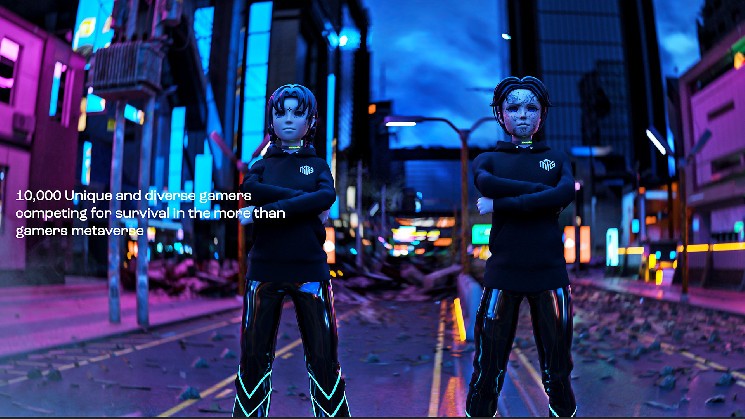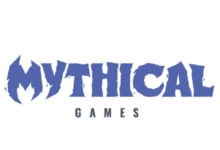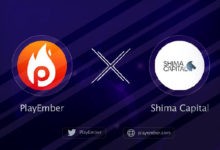More Than Gamers Sold a Breakthrough Web3 Game and Delivered Empty Promises

In December 2021, a number of esports enthusiasts set out to build the ultimate Web3 gaming ecosystem made for pro gamers, by pro gamers. With a founding team steeped in esports experience and a successful non-fungible token (NFT) mint raising millions, things looked promising for the fledgling project, titled More Than Gamers. But just over a year later the founders have effectively stepped away, leaving their community wondering what happened to the promised Web3 game … and the money.
From showing promise to broken promises
More Than Gamers (MTG) brought together prominent YouTube personalities, streamers and esports leaders to build out its ambitious vision: Aaron Kirshenberg, founder and CEO esports league Team New Age (TNA); esports manager and co-founder Nicholas Amos, head of marketing Michael Padilla, aka The Fortnite Guy; 3D animated visual artist Aalasady Al-Shureiji, aka Ali; and design lead Jacob Honeycutt, aka 3seater. Kirshenberg later brought on Mat Sposta, founder of NFT collective Chibi Labs, as an advisor in early 2022 to help him build out the MTG universe after its NFT mint.
“I saw the opportunity to create a community in the Web3 space that’s centered around actual gamers,” Kirshenberg told CoinDesk.
To kick things off, the team created a 10,000-edition NFT profile picture (PFP) collection made up of a series of 3D characters that, as the project states, would be “fighting for survival in the Gamers Metaverse.”
On Dec. 23, 2021, MTG opened the mint for the first 7,000 NFTs in its collection. Listed for 0.2 ETH (about $822 at the time), the collection sold out in seconds and netted roughly $5.7 million in initial sales. The remaining 3,000 tokens were listed the next day, raising the total profits of the mint to around 8.2 million.
The project quickly gained traction among collectors and gamers, leading to booming sales on the secondary market. In its early days, the project boasted that one of its rare “Legendary Gamer” NFTs sold for 27.5 ETH, which was about $102,500 at the time.
MTG’s early success attracted an undisclosed amount of seed funding from metaverse investment group QGlobe, a firm known for helping Web3 companies facilitate initial-game offerings (IGO), which are methods to crowdsource funding for play-to-earn games through native tokens or digital asset sales.
QGlobe co-founder Sarah Austin told CoinDesk in December 2021 that it planned to build an MTG metaverse ecosystem that could rival top platforms like Decentraland or The Sandbox. On its website, QGlobe previously teased “MASSIVE MTG online tournaments with hundreds of thousands if not millions of viewers.”
Post-mint, the collection collaborated with buzzy projects such as Hype Bears Club, FishyFam and Awesome Apes, to cross-promote allowlist spots. It even worked with professional Fortnite player Daniel Keem, aka Keemstar, on a MTG PFP and token holder-only tournament.
MTG continued to build momentum by publishing an ambitious project roadmap in March 2022 that outlined plans for its expansive gaming ecosystem – pledging to build a “metaverse environment for gamers” and drop a “cutting-edge MTG game” in the third or fourth quarter of 2022. It also teased the release of a native token, ARCADA, which users could earn by staking their NFTs. Ahead of the game launch MTG said it would pin down plans for an in-game offering (IGO) to expand its asset offering.
Its road map also included plans for broader partnerships with major brands, including sportswear giant Champion, which would offer exclusive merchandise and wearables on the MTG platform (a tweet about the partnership has since been deleted). In-person meetups, conferences and even (somewhat strangely) a full rebrand were woven into the project’s future plans.
But despite its impressive NFT launch and laudable goals, the project has not delivered on many of its early promises that initially enticed professional gamers. In just over a year, the project has managed to deliver smaller offerings, like a merch store, a mini-game and a tournament with a $60,000 prize pool – but its highly anticipated ARCADA token never materialized, its brand partnerships have seemingly dissolved and its groundbreaking Web3 gaming ecosystem remains as elusive as ever.
To make matters worse, all of the original founding members have recently stepped away from leading the project, leaving community members that poured in thousands of dollars blindsided and with a slew of undelivered promises.
“The road map changed more times than I can count,” said an MTG token holder and active community member who asked to be referred to as Steven. “Partnerships never materialized, and deliverables didn’t come close to the marketed game.”
Early road map glitches
The founding team behind More Than Gamers were experts in building hype. Ahead of the NFT collection’s release, the MTG team was strategic about advertising the project with flashy promotional videos across multiple accounts.
Despite its successful marketing efforts and affiliations with influential figures, early signs that the project was struggling began to crop up.
Around two months after their mint, MTG posted on Twitter that TFG had agreed to step down from the project, raising questions about the overall direction of the project.
“This left the community in utter shambles, with no owner to trust, so many conflicting stories and still no delivering on the promised collaborations,” Ben, a mononymous MTG community member, told CoinDesk. Ben lent CoinDesk one of his MTG NFTs during the course of this story to verify his membership and allow CoinDesk access to NFT-restricted areas of the MTG Discord.
Investors were also warned of potential red flags early on. In QGlobe’s early days working with MTG, sources approached Austin with information about a previous project that Kirsheberg’s esports league TNA promoted called Sushiverse that employed similar tactics to MTG and faced an early demise.
This did not initially deter QGlobe, which wrote in a blog post in May 2022 that it would facilitate MTG’s in-game offering to allow users to make in-game asset purchases.
To appease restless holders waiting for the full MTG gaming ecosystem, MTG teased a mini-game to its holders in May as a precursor to the larger play-to-earn game meant to be released later in the year.
Steven told CoinDesk that holders were not impressed with the mini-game offering, which felt like a haphazard attempt by the project’s founders to deliver value to anxious community members.
“It felt like my uncle’s stories about Atari and the first Nintendo,” said Steven. “The mini-game wasn’t on the initial road map and this felt like disaster management with the team trying to deliver something, anything.”
Soon after, MTG posted a Twitter thread in response to the criticism, clarifying the game’s intention to drive value to holders of its (still unlaunched) ARCADA token, while pointing a finger at those who criticized it.
“The reality is that this space is ruthless and critics will do what they can to put you down. We are going to continue building, as promised, and delivering value back to the MTG ecosystem,” MTG said in a tweet.
It was around this time that NFT holders began expressing confusion on Discord and Twitter about the overall state of the project and many of the long-term promises that remained confined to the road map. Delays plagued the release of the mini-game, and the $100,000 prize pool for the tournament for the mini-game was eventually reduced to $60,000.
The mini-game officially launched on Nov. 7, 2022, and remained open until Jan. 2, 2023, though many in the community were disappointed with the finished product. Ben told CoinDesk the game was a “slap in the face,” and that it had many loopholes for players to cheat, rack up funds and promptly depart the community with their loot.
Even bigger issues arose around the project’s ARCADA token launch. In February 2022, MTG released an NFT staking feature so holders could earn ARCADA. Staking, the project said, would allow games to earn ARCADA pre-launch, a token that according to the MTG website, would be used for in-game purchases and determine a player’s “society class” within the ecosystem.
By March, holders had apparently staked over 50% of all MTG NFTs to earn a still-uncreated token. The goal was to create a liquidity pool for users to earn rewards on their token.
Based on MTG’s road map, users believed the ARCADA token would launch and have real monetary value – which it has yet to provide. Kirshenberg told CoinDesk investment firm Wolfco Capital would work on this token with MTG, but that the partnership with Wolfco Capital ultimately fell through, and the liquidity pool never came to fruition.
Mickael Salabi, a Web3 investor and former advisor to Wolfco Capital, told CoinDesk the company shut down in April 2022, shortly after he was brought on. He noted that he is not familiar with MTG, and never met nor interacted with Kirshenberg. Other names associated with Wolfco Capital did not respond to CoinDesk for comment.
Leadership goes AFK
Beyond dissatisfied holders, tension was brewing among the MTG team and its investors. On Dec. 10, 2022, Kirshenberg claimed on Discord that the project had terminated its partnership with QGlobe due to “promises that never came to fruition,” such as the highly anticipated IGO.
“We were blindsided by this news and [were] led to believe the IGO was going to happen for months,” said Kirshenberg in a Discord post. “We are discussing alternatives internally.”
While holders had been grumbling about the project’s stagnant growth for months, alarm bells began to sound in January 2023, when Kirshenberg surprised the MTG community on Discord by announcing he was handing off leadership of the project to two Discord moderators, whose internet pseudonyms are Richie and Nikster.
“The entire team feels as though they are best equipped to lead MTG moving forward and for the project to succeed,” said Kirshenberg. “Myself and Sposta will continue to passively advise the project.”
Along with new leadership came a major deviation from the ethos of the project that initially got gamers excited – the announcement of a pivot away from building a Web3 gaming ecosystem in favor of developing a Web2 mobile game.
“Revenue wouldn’t be easy to extract from the current market, so we will extract it from where it makes sense, the Web2 space,” said Richie in a Discord post addressing the leadership change and strategy shift.
Nikster told CoinDesk he and Richie are actively seeking ways to skirt current market conditions to bring value to token holders and make MTG a unique gaming community.
“We will continue to have thoughtful conversations around the new game, as we hope to create a revenue stream to reward the holders who have been patiently waiting to extract value from MTG,” said Nikster.
Ben told CoinDesk the sudden strategy shift signaled the project’s impending demise.
“I was absolutely shocked. It was the nail in the coffin,” Ben told CoinDesk. “Whenever I would ask Kirshenberg about why things went wrong he would never take accountability, which bothered a lot of the community.”
For some gamers, MTG was their first dive into Web3 – Ben told CoinDesk that MTG was the first NFT he ever purchased.
“I saw everyone buying really cool pieces of art with utility,” said Ben. “I really wanted to be a part of a community that transformed Web3 and gaming, which is what the trailers and marketing pointed to.”
“I also joined due to the trailers and marketing that were used to depict their game, brand and plans,” said Steven. “In retrospect, the MTG deliverables disappointed the community and fell extremely short of their marketing and communication with the Discord community.”
Game over?
While some community members continue to hold on to hope the project will deliver on its promises, others have decided to cut their losses.
At the time of publishing, the project’s floor price on secondary marketplace OpenSea has fallen from a high of 0.6 ETH (roughly $2,400 in December 2021) to 0.012 ETH (about $20 today) – a 97% drop from the project’s original mint price.
Ben and Steven, who voiced their anger with the project’s progress on Discord, have since been removed from the channel. Meanwhile, Kirshenberg remains optimistic about the project’s future and his involvement in its success.
“I’m still very active. Something I’m very proud of about MTG is the fact that we do have genuine esports gaming holders who actually hold MTG,” Kirshenberg told CoinDesk, explaining that he still owns 25% of MTG and has a decisive voice in the project.
Why the formerly successful project has recently undergone a major personnel and strategy shift remains unclear. Where and how the $8.2 million in initial funds were spent is an even greater mystery.
QGlobe’s Austin told CoinDesk the contracts signed between MTG and her firm were contingent on MTG’s execution of promised deliverables, which she says the project has fallen short of achieving thus far. She also specified that QGlobe had never agreed to partnerships or named companies involved in those early conversations, adding that MTG’s discussion of QGlobe facilitating its IGO were misconstrued – QGlobe said it would only establish the IGO after the game had been released.
“QGlobe went above and beyond and spoon-fed MTG viable, experienced professionals to get the metaverse game completed,” said Austin. “Aaron Kirshenberg’s refusal to spend MTG’s money on metaverse game development resulted in MTG’s rejection by multiple IGO platforms.”
Kirshenberg, when asked to comment by CoinDesk, insisted that a pre-release IGO was promised and called QGlobe’s claims “delusional.”
Kirshenberg says he remains committed to seeing the project through no matter how its road map shifts. He noted that in the coming weeks he plans to make announcements regarding new partnerships and game updates to keep the community morale afloat.
“This next game will certainly be more polished than the last one,” said Kirshenberg.
On Feb. 14, MTG released a trailer for its upcoming Web2 racing mini-game, which some dismissed as another flashy promotional opportunity.
Richie outlined the game’s planned release in a Discord post – a desktop game that will eventually incorporate in-game purchases and rewards to NFT holders before hitting gaming platforms Switch, Steam and eventually mobile.
“We will make this game Web 2.5 to allow us to work faster, but in-game assets with time will evolve into Web 3 with time,” Richie said in Discord.
But many formerly loyal community members appear to have already tapped out of the project, citing underwhelming deliverables, unfulfilled promises and leaders that deserted the project without explanation.
“I would not have ever come near this project if I knew it was going to be just a mobile app game,” said Ben. “I hope the project can admit its fault and do right by the loyal holders like me who have been here since mint and have spent thousands of dollars.”
“It’s like the ‘dine and dash’ NFT, they all ate and left the table, one after the other, so that no one would notice,” said Steven. “Unless funding magically reappears from what was collected at mint or some other source, I don’t expect much deviation from what we have already seen.”






 Bitcoin
Bitcoin  Ethereum
Ethereum  Tether
Tether  USDC
USDC  TRON
TRON  Dogecoin
Dogecoin  Cardano
Cardano  Bitcoin Cash
Bitcoin Cash  Chainlink
Chainlink  Monero
Monero  Zcash
Zcash  LEO Token
LEO Token  Stellar
Stellar  Litecoin
Litecoin  Hedera
Hedera  Dai
Dai  Cronos
Cronos  Tether Gold
Tether Gold  OKB
OKB  Ethereum Classic
Ethereum Classic  KuCoin
KuCoin  Gate
Gate  Algorand
Algorand  Cosmos Hub
Cosmos Hub  VeChain
VeChain  Dash
Dash  Tezos
Tezos  TrueUSD
TrueUSD  Stacks
Stacks  IOTA
IOTA  Basic Attention
Basic Attention  Decred
Decred  Theta Network
Theta Network  NEO
NEO  Synthetix
Synthetix  Qtum
Qtum  DigiByte
DigiByte  Ravencoin
Ravencoin  0x Protocol
0x Protocol  Nano
Nano  Zilliqa
Zilliqa  Holo
Holo  Siacoin
Siacoin  Numeraire
Numeraire  Waves
Waves  Ontology
Ontology  BUSD
BUSD  Status
Status  Enjin Coin
Enjin Coin  Pax Dollar
Pax Dollar  Hive
Hive  Lisk
Lisk  Steem
Steem  Huobi
Huobi  OMG Network
OMG Network  NEM
NEM  Bitcoin Gold
Bitcoin Gold  Augur
Augur  HUSD
HUSD